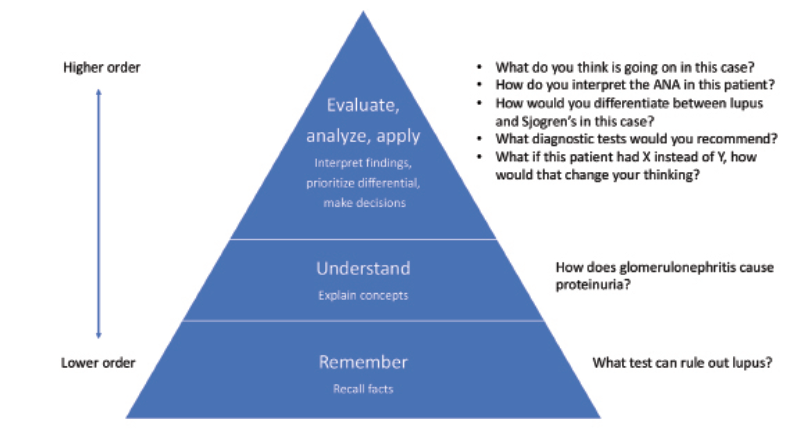After the Encounter
The post-encounter period is an important time to extend the educational opportunities provided by the patient evaluation. Shared experience and direct observation of learners allow the preceptor to provide more specific feedback, which ideally highlights what the learner should continue to do as well as areas for improvement.10,11 The latter can then serve as focus points for continued learning in the post-encounter period, either by providing a resource to review or asking the learner to look something up that can be revisited at a future time.
Including the learner in post-encounter communications with other members of the care team requires little additional time, but we have found it can make the learner feel like a valued part of the team while also exposing them to multidisciplinary care.
In Sum
Precepting junior learners is a challenging but important task. The pre-, during and post-encounter framework described here can help organize an approach to
teaching junior learners and help maintain timely delivery of effective patient care in clinical practice. Developing a learning contract is critical to successful teaching during patient encounters. Using active teaching techniques, such as the OMP, can enhance learning and knowledge retention.
Fostering learner engagement through the active apprenticeship model can improve the traditional shadowing experience. Specific feedback and directing asynchronous learning in the pre- and post-encounter period can extend learning beyond the visit. Using aspects of these techniques has the potential to foster transformational learning experiences, which can help our learners and our patients.
Ian Cooley is a second-year rheumatology fellow at Massachusetts General Hospital, Boston. His clinical and research interests include crystalline arthritis, musculoskeletal ultrasound and medical education.
Eli M. Miloslavsky, MD, is an associate professor of medicine in the Division of Rheumatology, Allergy and Immunology, Department of Medicine, Massachusetts General Hospital and Harvard Medical School, Boston.
Disclosures
Dr. Cooley is an editorial contributor to Practice Update, Rheumatology (Elsevier); and a contributing editor to Clinical Reasoning (NEJM Group).
References
- Battafarano DF, Ditmyer M, Bolster MB, et al. 2015 American College of Rheumatology Workforce Study: Supply and demand projections of adult rheumatology workforce, 2015–2030. Arthritis Care Res (Hoboken). 2018 Apr;70(4):617–626.
- Miloslavsky EM, Bolster MB. Addressing the rheumatology workforce shortage: A multifaceted approach. Semin Arthritis Rheum. 2020 Aug;50(4):791–796.
- Knowles MS. The modern practice of adult education: From pedagogy to andragogy. Rev. and updated. Cambridge, The Adult Education Company. 1980.
- Roberts DH, Newman LR, Schwartzstein RM. Twelve tips for facilitating Millennials’ learning. Med Teach. 2012;34(4):274–278.
- Ramani S, Könings KD, Ginsburg S, van Der Vleuten CPM. Relationships as the backbone of feedback: Exploring preceptor and resident perceptions of their behaviors during feedback conversations. Acad Med. 2020 Jul;95(7):1073–1081.
- Neher JO, Gordon KC, Meyer B, Stevens N. A five-step “microskills” model of clinical teaching. J Am Board Fam Pract. Jul-Aug1992;5(4):419–424.
- Restrepo D, Hunt D, Miloslavsky E. Transforming traditional shadowing: Engaging millennial learners through the active apprenticeship. Clin Teach. 2020 Feb;17(1):31–35.
- Anderson, LW, Krathwohl, DR. A taxonomy for learning, teaching, and assessing: A revision of Bloom’s taxonomy of educational objectives. Longman. 2001.
- Hausmann JS, Schwartzstein RM. Using questions to enhance rheumatology education. Arthritis Care Res (Hoboken). 2019 Oct;71(10):1304–1309.
- Kritek PA. Strategies for effective feedback. Ann Am Thorac Soc. 2015 Apr;12(4):557–560.
- Bing-You R, Hayes V, Varaklis K, et al. Feedback for learners in medical education: What is known? A scoping review. Acad Med. 2017 Sep;92(9):1346–1354.


